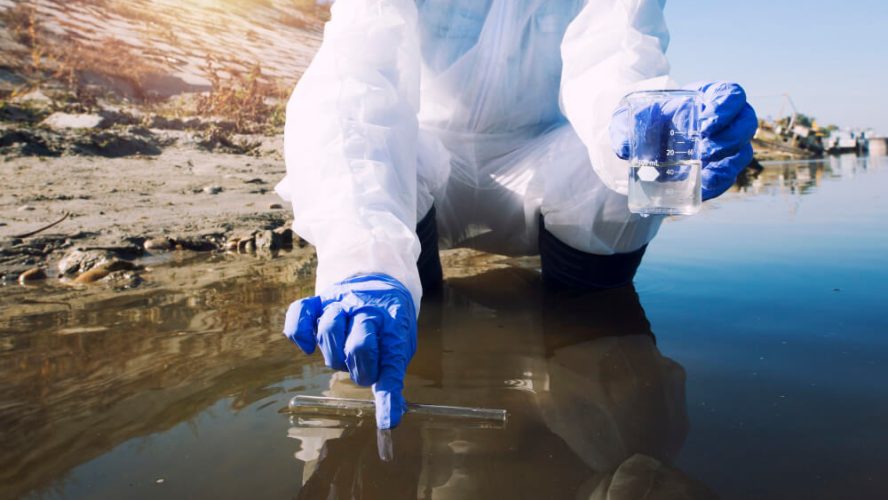The wastewater treatment industry stands at a crossroads, facing what might be its most formidable challenge yet: the removal of per- and polyfluoroalkyl substances (PFAS). Removing PFAS has become an urgent matter that is seeing innovative approaches, we’ll shortly discuss.
While much has been written about these “forever chemicals,” the reality of treating them is far more nuanced and complex than often portrayed in conventional literature.
The following article will dive into the different ways these forever chemicals are being fought. We’ll dive into the sources of these chemicals and different ways industries are fighting its presence across ecosystems.
Rethinking Our Approach to PFAS
The traditional narrative around PFAS often focuses on their persistence, but this oversimplifies a more intricate challenge. These compounds don’t just persist – they transform, interact, and behave differently under varying environmental conditions.
Recent research has revealed that PFAS compounds can form previously unknown complexes with natural organic matter, challenging our fundamental understanding of their behavior in wastewater systems.
What’s Still Unanswered
Scientists, researchers and enthusiasts like us have been unable to answer a few questions about removing PFAS and related topics. Here are a few things that need urgent response from the scientific community:
- How can we efficiently detect and measure the PFAS in air, water, soil and wildlife?
- What is the extent of exposure to PFAS amongst the community?
- How can removing PFAS from drinking water be accomplished?
- Management and disposing process after removing PFAS
These are some of the most common and urgent areas that require the immediate attention of scientists and researchers, alike. As curious readers and enthusiasts, we can only discover the following through research:
- The long-lasting chemical has components that breakdown slowly over time
- Their persistence in the environment has led to its presence in the environment as it is present in a variety of food products
- Exposure to the chemical, even while removing PFAS, can lead to serious health consequences that affect humans and animals
As understandable, the forever chemicals get their name due to their true nature – they are always present in the environment. This is mainly due to their slow seepage through different ecosystems that makes it even harder to get rid of.
The following sections dive into the different ways there has been success in the attempts of removing PFAS.
The Overlooked Sources – Where Removing PFAS Became Difficult
While industrial discharge and consumer products are commonly cited PFAS sources, several lesser-known contributors significantly impact treatment strategies:
Atmospheric Deposition
Recent studies have shown that PFAS can travel through air currents and deposit into water and wastewater systems through rainfall, creating a diffuse source that bypasses traditional point-source controls.
This atmospheric transport mechanism means that even facilities in areas without direct PFAS sources must consider treatment options.
Recycled Materials
The growing circular economy, while beneficial for sustainability, has introduced unexpected PFAS pathways. Recycled paper products and composting materials can concentrate these compounds, creating new challenges for treatment facilities processing the resulting leachate.
Legacy Infrastructure
The historical use of PFAS-containing materials in water infrastructure itself – from pipe linings to sensor coatings – can contribute to contamination, a factor rarely considered in treatment strategies.
The Biological Paradox
One of the most intriguing aspects of PFAS treatment is what we’re calling the “biological paradox.” While conventional wisdom suggests that biological treatment processes are ineffective against PFAS, emerging research indicates that certain microorganisms may have developed mechanisms to cope with these compounds:
Adaptive Microbial Communities
Some treatment plants have observed unexpected PFAS reductions in biological treatment stages, suggesting the potential development of PFAS-tolerant microbial communities.
This adaptation could offer new pathways for treatment that haven’t been fully explored.
Enzymatic Innovations
Recent discoveries of enzymes capable of breaking specific PFAS bonds have opened new possibilities for enhanced biological treatment approaches, challenging the notion that biodegradation is impossible.
Beyond Traditional Treatment: Innovative Approaches
The industry is witnessing the emergence of unconventional treatment methods that show promise:
Supercritical Water Oxidation
This technology, operating at extremely high temperatures and pressures, creates conditions where PFAS molecules become unstable and break down. While energy-intensive, it offers one of the few true destruction pathways currently available.
Plasma-Based Treatment
Cold plasma technology generates highly reactive species capable of breaking PFAS bonds without the extreme conditions required by other methods. This approach is particularly interesting for smaller treatment facilities due to its scalability.
Electrochemical Destruction with Smart Materials
Novel electrode materials incorporating rare earth elements have shown unprecedented success in breaking down PFAS molecules while consuming less energy than conventional electrochemical methods.
The Hidden Cost Factor
The economic reality of PFAS treatment extends beyond obvious operational costs:
Treatment Train Synergies
Some facilities have discovered that combining treatment technologies in specific sequences can achieve better results at lower costs than operating individual systems – a phenomenon we call “treatment synergy.”
Impact on Biological Nutrient Removal
PFAS treatment can affect other treatment processes, particularly biological nutrient removal. Understanding these interactions is crucial for maintaining overall treatment efficiency while addressing PFAS.
Future-Proofing Treatment Strategies
As we look toward the future, several emerging considerations will shape PFAS treatment:
Climate Change Impacts
Rising temperatures and changing precipitation patterns will affect PFAS behavior in treatment systems. Forward-thinking facilities are already incorporating climate resilience into their PFAS treatment strategies.
Real-Time Monitoring Evolution
The development of real-time PFAS monitoring systems, while still in its infancy, promises to revolutionize treatment optimization. Early adopters are already seeing benefits in treatment efficiency and cost reduction.
A Path Forward: Integration and Innovation
Success in PFAS treatment requires moving beyond the traditional wastewater treatment paradigm. The future lies in:
- Adaptive Management Systems Implementing flexible treatment systems that can respond to varying PFAS loads and compositions through smart controls and modular design.
- Community-Scale Solutions Developing treatment strategies that consider the entire water cycle within a community, including drinking water treatment, wastewater treatment, and water reuse systems.
- Green Chemistry Integration Working with industries to develop PFAS alternatives that maintain desired performance characteristics while being more amenable to treatment.
Fighting PFAS is Possible!
The challenge of removing PFAS through wastewater treatment requires us to think beyond conventional approaches. By understanding the complex interactions between these compounds and treatment systems, embracing innovative technologies, and adopting holistic management strategies, we can develop more effective solutions for this persistent challenge.
The future of PFAS treatment lies not in a single breakthrough technology but in the intelligent integration of multiple approaches, informed by a deeper understanding of these compounds’ behavior in real-world systems.
As we continue to uncover new aspects of PFAS chemistry and treatment, flexibility and adaptability will be key to successful treatment strategies.













